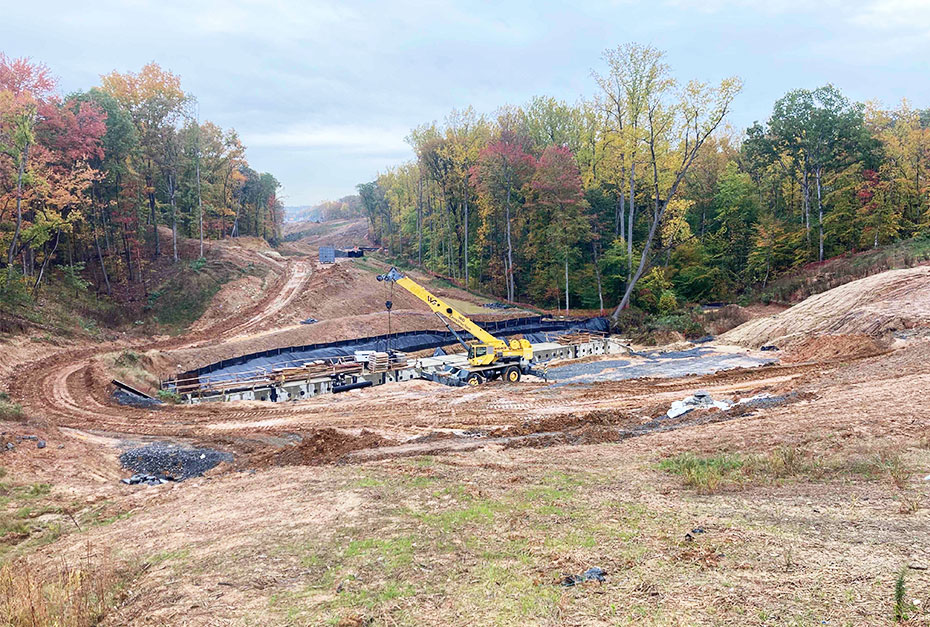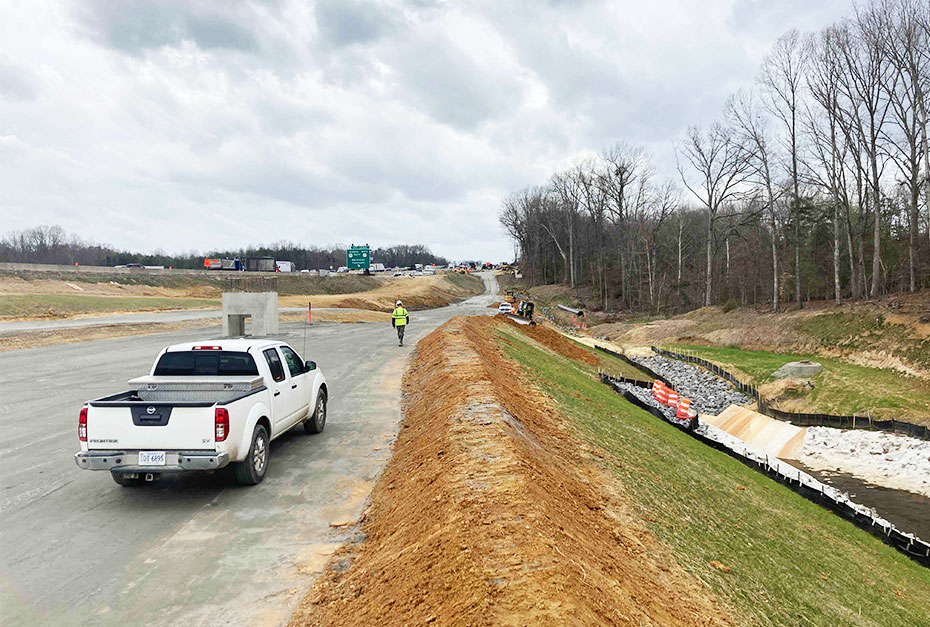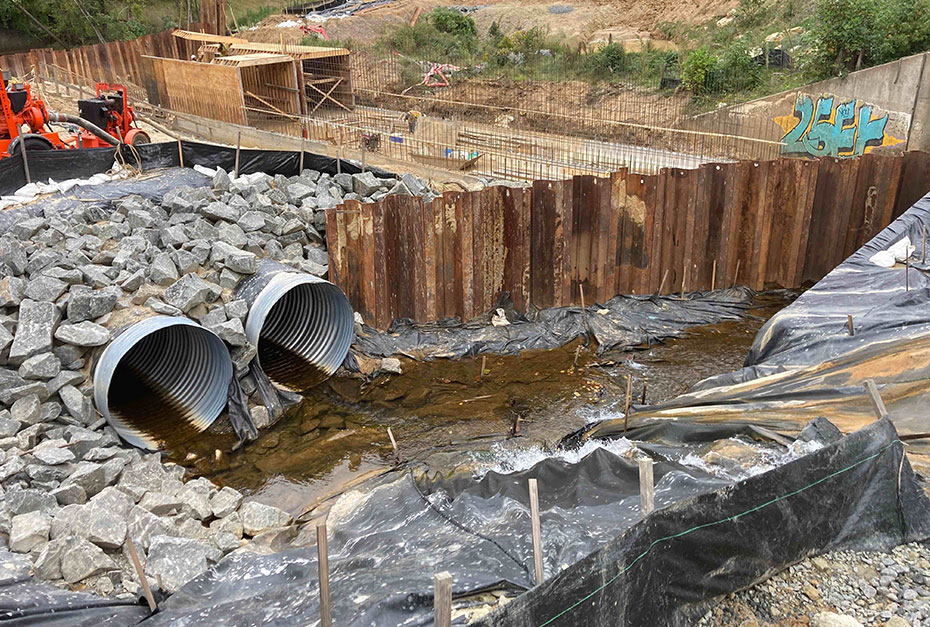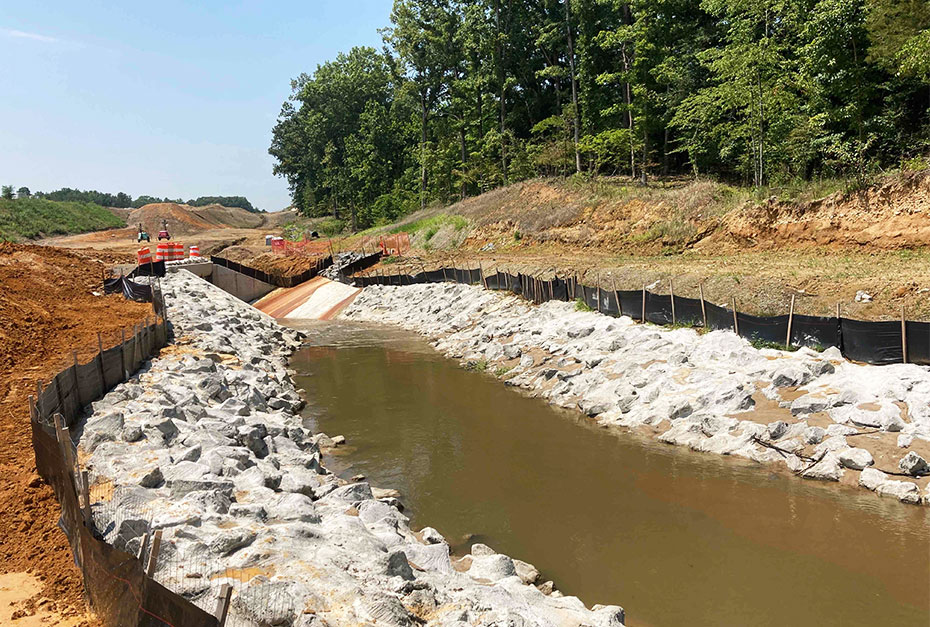WSSI has provided a full range of natural and cultural resources services along 60 miles of interstate to relieve traffic pressure in northern Virginia: 36 miles along I-95 & I-395; 11 miles of I-495; and 13 miles of I-95 in Fredericksburg. WSSI has studied and survey-located Waters of the U.S.; evaluated repercussions for threatened and endangered species; documented cultural resources; procured impact authorizations; secured compensation for stream and wetland impacts through off-site stream restoration and mitigation bank credits; and provided Clean Water Act compliance services for these Virginia Public-Private Transportation Act projects.
The Challenge
These high-profile projects required reliable natural and cultural resource studies; experienced guidance in reducing impacts and creative compensation solutions to facilitate impact permitting; and committed project compliance guidance and inspections. Foresight and experience are critical for effective and efficient work in these tightly constrained corridors along active and heavily traveled highways.
As designs changed during the project, WSSI had to be able to mobilize quickly for additional field work and permit modifications to keep the projects moving forward.
Our Solution
In each of these projects, WSSI’s careful scoping process and honest assessment of potential permitting and compliance hurdles has revealed the best paths for success.
Starting with detailed site mapping that includes recent color and color infrared images of the project area, historical maps of the area and previously documented natural resources, and important ecosystem characteristics such as topography and soils, WSSI evaluated the potential studies necessary to proceed for each Express Lanes section. We then conducted the subsequent on-site investigations necessary to move forward, including WOTUS delineation, survey-location, and confirmation; endangered and threatened species searches, and cultural resource studies.
In permitting, WSSI has worked with project engineers and other stakeholders to assess best possible ways to reduce WOTUS impacts while meeting project needs. WSSI obtained Individual Permits from the U.S. Army Corps of Engineers and the Virginia Department of Environmental Quality with subsequent modifications, as well as the Subaqueous Bed Permits from the Virginia Marine Resources Commission and the necessary Federal Coastal Zone Management Consistency Certification Letters. WSSI’s mitigation banks and project-specific stream restoration have provided impact compensation for the projects.
For the southernmost 13 miles – in Fredericksburg – WSSI’s compliance services include storm event monitoring, oversight of construction in sensitive areas, erosion & sediment (E&S) and stormwater site audits, Virginia Stormwater Management Program permit (VSMP) modifications, review of stormwater and erosion and sediment control plans, and addressing restoration and corrective action plans as needed. WSSI also communicates with state and federal agencies (including monitoring reports) regarding project status and compliance.
For the preceeding 47 miles of Express Lanes, WSSI helped keep the project on track and moving forward. We provided an expert eye for the project, conducting an independent third-party audit of the project E&S controls and the Stormwater Pollution Prevention Plans to comply with VSMP permits. WSSI also completed the DEQ permit-required construction monitoring for both projects.
Project Facts
- Owner
Various - Location
Prince William, Fairfax, Arlington, Stafford, & Spotsylvania Counties, and Cities of Alexandria & Fredericksburg, Virginia - Size
60 miles (I-95-395 = 36 miles, I-495 = 11 miles, I-95 Fredericksburg = 13 miles)
Markets
Services
- Archeology
- GIS and Mapping
- Mitigation Banking
- Environmental Studies
- Wetland Delineation
- Threatened & Endangered Species
- Chesapeake Bay Act Studies
- Permitting
- Wetland Permitting
- Compliance
- NPDES/VPDES
- Engineering and Survey
- Stream Restoration and Mitigation
- Wetland Mitigation
- Survey
- Mitigation and Restoration
- Cultural Resources
- Mapping and Technology






